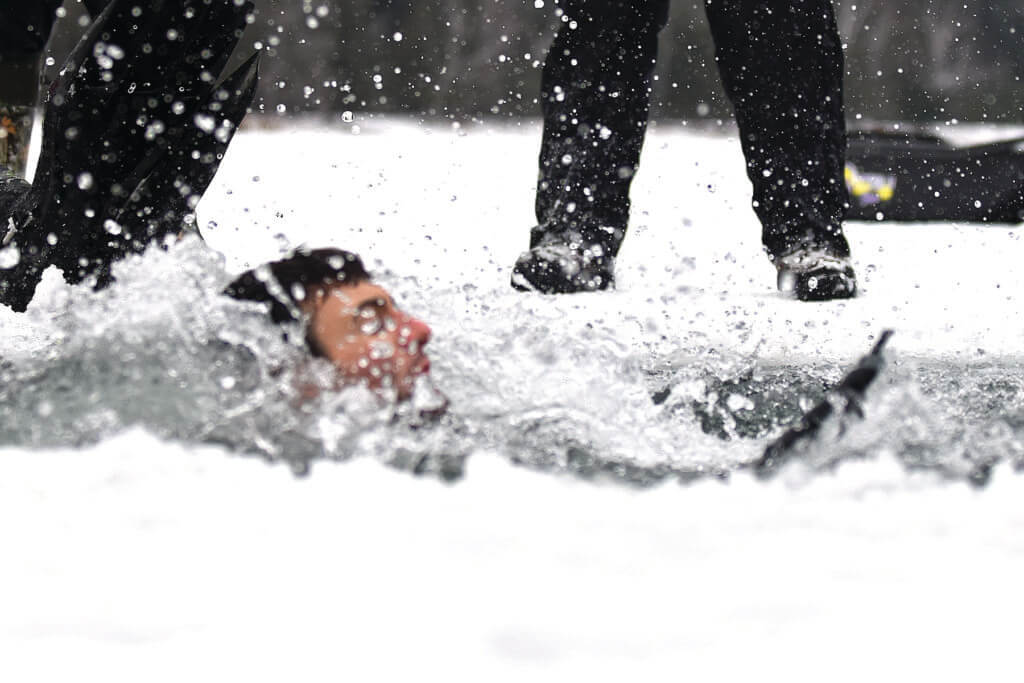Hundreds of soldiers – including some from Latvia – will converge at Michigan’s National All-Domain Warfighter Center (NADWC) this month for a training exercise that will help prepare them to combat emerging threats.
The fourth winter iteration of Northern Strike will be held Jan. 20-29, 2023, bringing together guardsmen from Michigan, Wisconsin, New York and Alabama; the active-duty Marine Fighter Attack Squadron 115 from South Carolina; the active-duty Air Force 69th Bomb Squadron from North Dakota; and representatives from Latvian National Armed Forces.
NADWC consists of Camp Grayling Joint Maneuver Training Center – the largest National Guard training facility in the United States – and Alpena Combat Readiness Training Center, about 90 miles away on the shore of Lake Huron.
It’s accessible by boat, rail and near three airports, making it more cost effective than Alaska for many units seeking arctic training in the United States, said Michigan National Guard Adjutant General Maj. Gen. Paul Rogers.
Northern Michigan typically gets at least a foot of snow pack in the winter, and the temperatures are usually in the low to mid-20s, but can dip, Rogers said.
“Not like the long-standing cold you might get in Minnesota, but cold enough that it challenges our systems or our equipment and our people, and their ability to train and build readiness in those extreme environments,” he said.
RELATED: New era for Sinai Peninsula peacekeeping mission begins
While training in warm areas is nice, Russia and China (two emerging threats) have winter, said Command Sgt. Maj. Kevin Palmatier, lead exercise planner for Northern Strike. It’s better to learn how extreme cold temperatures affect equipment in training.
Shawn Cook, the Northern Strike fires planner, said that when CS gas was used during an event last year, troops found out their gas masks didn’t fit as expected.
“You could find leaks really easy,” he said.
That full range of opportunities is a draw for the Wisconsin Army National Guard’s 1-120th Field Artillery Regiment, said battalion commander Lt. Col. Nate Bennington.
The winter iterations of Northern Strike have provided such comprehensive training that the full battalion is attending this year. The first two years only their Battery C attended; last year Battery C, Headquarters Battery and support elements participated.
Bennington said the difference in performance from the first to third years was night and day.
“The expectation is this year it’s going to be flawless,” he said.
In addition to the extreme weather, the 1-120th FA’s troops get to coordinate air support, which they can’t do at Wisconsin’s Fort McCoy, since planes aren’t allowed to fly during artillery fire. They also will practice reacting to Chemical, Biological, Radiological, Nuclear, and Explosives (CBRNE) attacks.
“The Northern Strike team is exceptional,”Bennington said.
He also credited the Latvian troops, who are involved thanks to their country’s State Partnership Program tie to the MING, marking 30 years in 2023. During Northern Strike’s winter exercise, they function as joint terminal attack controllers, overseeing synchronization between ground and air fires.
“By training side by side with our friends from the Michigan National Guard – our steadfast allies – we become stronger and more capable, enhancing interoperability and capability to conduct joint operations,” Lt. Gen. Leonīds Kalniņš, Latvia’s defense chief, told MING public affairs officer Air Force Capt. Andrew Layton last year.
National Guard Bureau Chief Gen. Daniel Hokanson is expected to visit the exercise, and Rogers said he’s looking forward to seeing his soldiers and airmen in action.
“Anytime I can get out and actually observe, see our service members train in a realistic environment, and really be challenged and watch them adapt, innovate and overcome those extreme conditions and be successful in their training, that’s all inspiring,” Rogers said. “Our junior service members or junior leaders, if they understand the intent, if they understand their purpose, they will figure out a way to be successful.”

